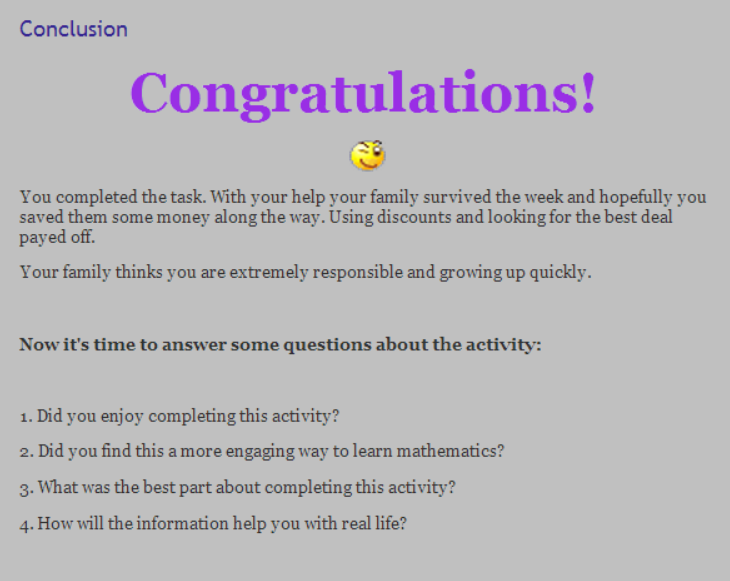padlet address: http://ja.padlet.com/
We can collect authentic materials for English language learning on 'padlet'. That is the wall where we can put anything you like, such as text, pictures, videos, web-site addresses, the learning materials we made, and so on. only a simple operation like drag and drop enable us create a wonderful presentation tool.
visual.ly: http://visual.ly/9-types-crazy-wedding-goers
'Visual.ly' is a community platform for infographics. We can search for many infographics ranging from Education to Business or Politics.
* infographics (Information graphics) are graphic visual representations of information, data or
knowledge intended to present complex information quickly and clearly (from WIKIPEDIA).
TitanPad http://titanpad.com/
WebQuest http://questgarden.com/
QuestGarden is the useful website where teachers can create lessons. We can construct the lessons flowing the certain steps; 1.Introduction, 2.Task, 3.Process, 4.Evaluation, 5.Conclusion, 6.Credits.
WebQuest http://questgarden.com/
QuestGarden is the useful website where teachers can create lessons. We can construct the lessons flowing the certain steps; 1.Introduction, 2.Task, 3.Process, 4.Evaluation, 5.Conclusion, 6.Credits.
It provide us with a constructivism lesson format, where most materials comes from the web and resources for the task and are pre-selected by the teacher. It is necessary to keep in mind that task should be interesting and doable for students.
 |
| ※ This lesson was created by Sebastian Henley http://questgarden.com/117/86/6/110303114558/ |
My WebQuest http://questgarden.com/170/40/5/140417062513/
SCRIBBLEMAPS http://www.scribblemaps.com/
Zimmer Twins http://zimmertwins.com/splash
TED : ideas worth spreading
The key to success? Grit - by Angela Lee Duckworth
She claims as follows; We can change our life with our big effort. From her research, she claims that only the students who work harder and longer without giving up can achieve their goal. What we need in education is how to build grid in students. Grit is passion and perseverance for long-term goals. Grit is sticking with your future and working hard to make the future reality. One suggestion for building grit in students is the growth of mindset of them. Grit is a power to success in the life.
TEDEd http://ed.ted.com/
We can create a lesson from the scratch based on any videos around YouYube, or edit any lesson featured on TED-Ed. The process of making a lesson is divided into 5 sections; 1.Watch, 2.Think, 3.Dig Deeper, 4.Discuss, 5.And Finally..... What is better, we can check the answer by 'Video Hint', which shows the exact moment scene for the answer. That is a really excellent lesson-maker.
Wedding: <= Click here. This is a lesson which I created through 'TEDEd'.
Why authentic materials?
The use of authentic material for English learning means the use of English available for people's daily life. That is, it gives students the feeling that their English learning is related to the real life. Fortunately in Japan, we can use the internet everywhere, access social networking, and acquire the large amount of up-to-date information easily. The use of such information for English learning must be effective and useful, because students can contribute to the real world through authentic English and deal with a scaled-down version of something adults do. That can provoke students' motivation and lead to the autonomous learning.
How to use authentic materials
to foster language learning attitude.
In the case of the use of authentic material, task-based or project-based learning can be suitable. Students can enhance their learning by social
interaction among learners. In order to achieve the task or project, they have to analyse, synthesize, and evaluate things, not only know, understand, and apply things. In the process of such higher levels of thinking, their ability of English language can evolve gradually.
"WebQuest" and "TEDEd" are designed to proceed stage by stage; from simpler to deeper one. Therefore, students can do the task or the project without lots of difficulty. If we teachers select authentic material according to the level of students' ability, we can make a suitable task tool for our students.
"padlet" and "TitanPad"may be useful for brainstorming as anyone put own idea or opinion on the wall, even if he or she hesitate to speak out in public.
For another way of brainstorming by one person, he/she can feel free to write down his/her idea on the wall in order to organize his/her thoughts.
For another way of brainstorming by one person, he/she can feel free to write down his/her idea on the wall in order to organize his/her thoughts.
"padlet" may be a excellent tools for the initial presentation of a lesson; as the introduction of a lesson.We can put anything suitable for the lesson content on the wall; it may be video, pictures, or articles of magazines or newspaper. The wall can change into a lively showcase where many kinds of authentic materials gather together, and it draws students' attention charmingly. The students may look forward to starting the lesson with joy.
"visual.ly" can be utilized as one of authentic materials to support students' task. There are lots of information graphics on "visual.ly" which are all vivid, attractive visually, and easy to catch the information necessary for the task/projects. As a advanced task, it may be possible for students to create their own infographics on a specific topic and share on a website.
Limitations
When I learnt those tools, I was overwhelmed by their usefulness and felt happy to have known them. However, if students' English language literacy is quite low, it could be rather difficult to have the students discuss or interact with one another sufficiently. The task/projects may be limited to the very easy one, which can be open question. In case of that, before the task-based learning, the students need to acquire a basic knowledge and ability.
From another teacher's point of view, it may take a lot of time to prepare for the task/projects. That is to say, we can not give that kinds of lessons so often, even if we hope to do frequently.






No comments:
Post a Comment